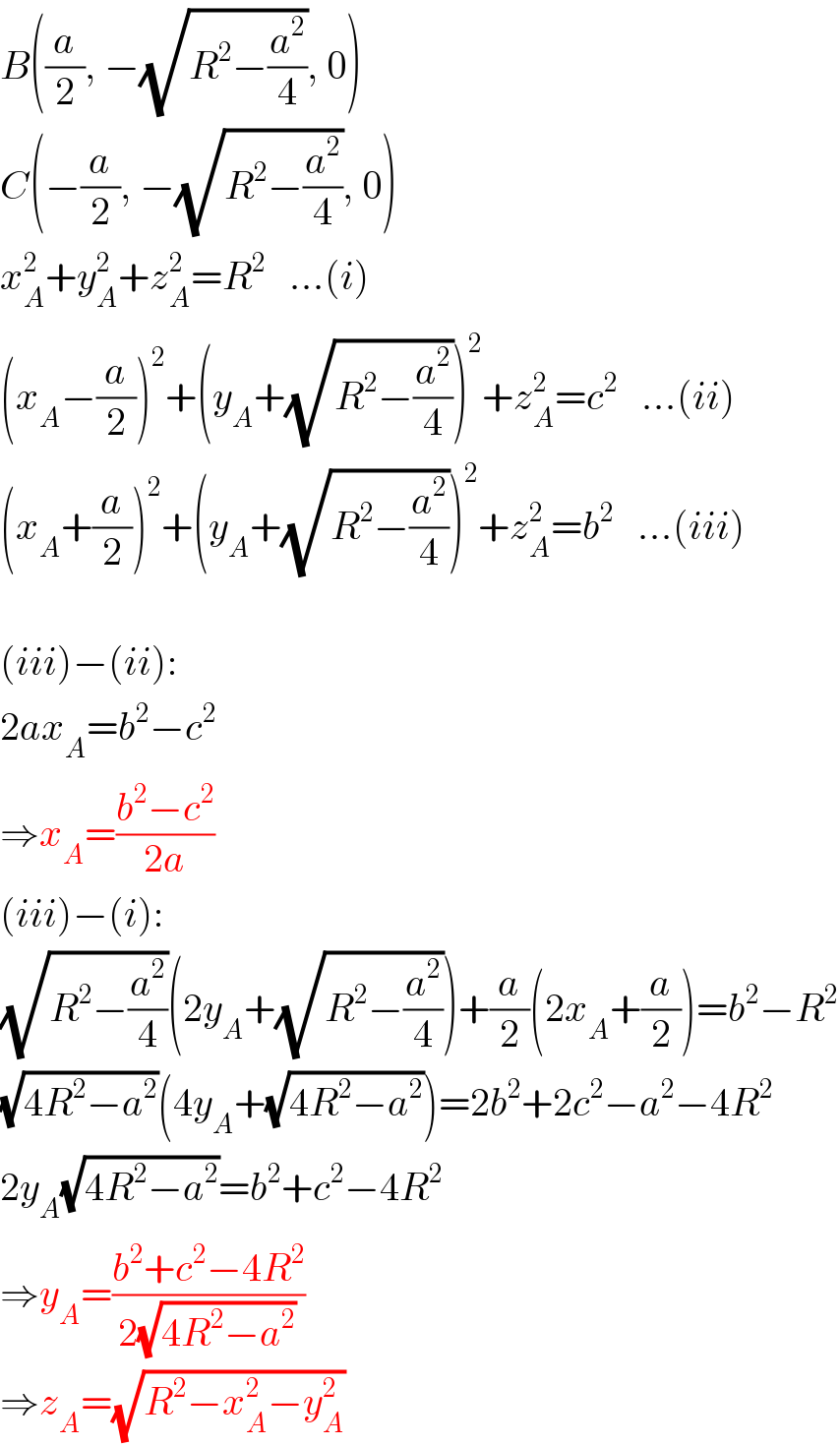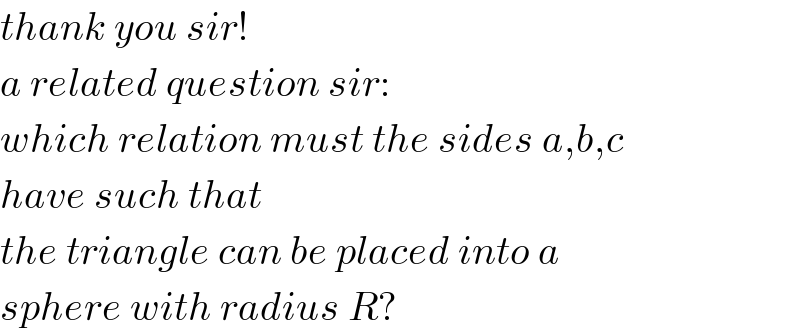
Question and Answers Forum
Question Number 51535 by ajfour last updated on 28/Dec/18

Commented by ajfour last updated on 28/Dec/18

Answered by mr W last updated on 28/Dec/18

Commented by ajfour last updated on 28/Dec/18

Commented by ajfour last updated on 28/Dec/18

Commented by mr W last updated on 28/Dec/18

Commented by mr W last updated on 28/Dec/18

Commented by mr W last updated on 28/Dec/18

